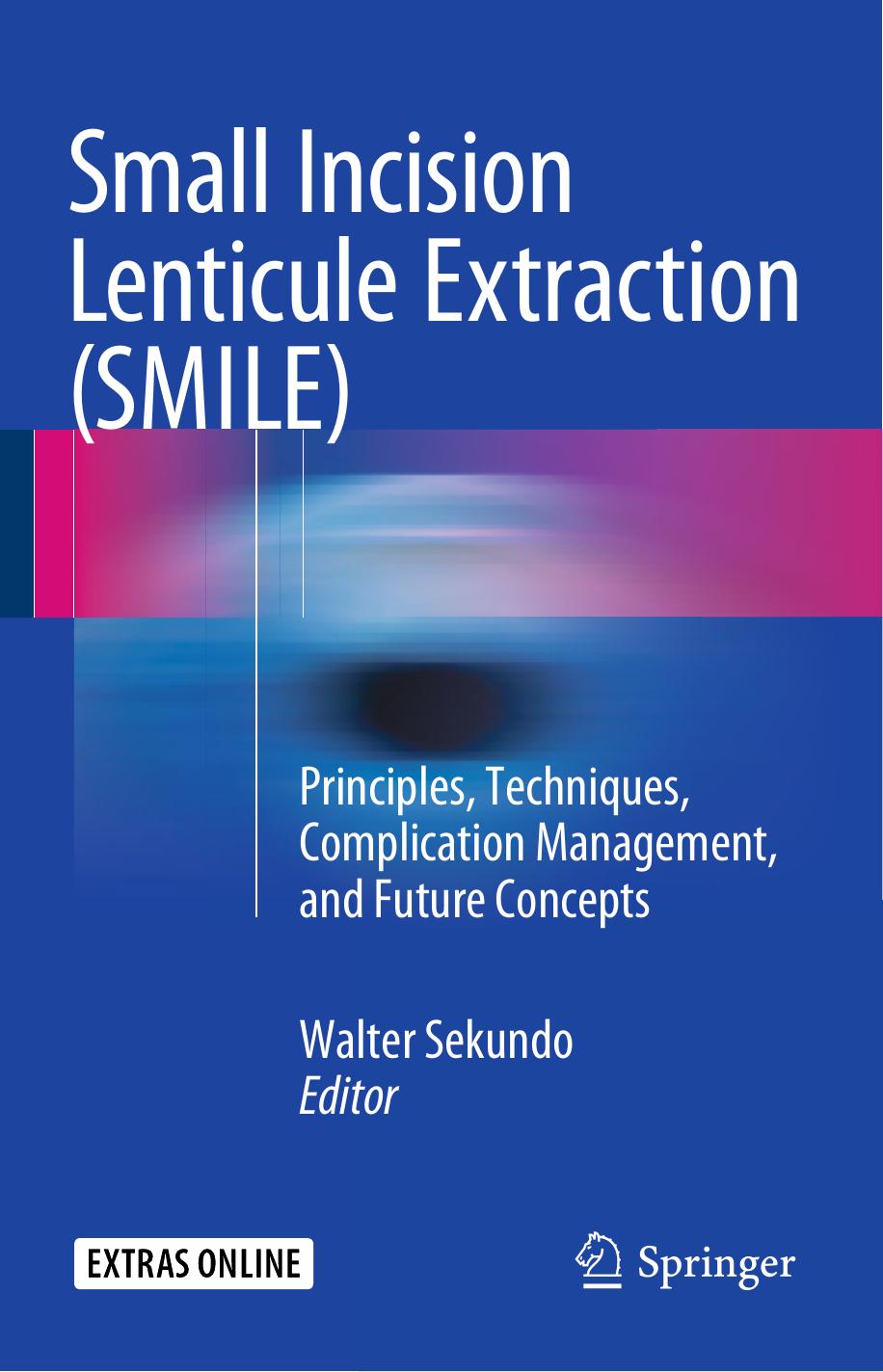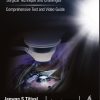Small Incision Lenticule Extraction Principles Techniques Complication Management and Future Concepts 1st edition by Walter Sekundo ISBN 3319185306 9783319185309
$70.00 Original price was: $70.00.$35.00Current price is: $35.00.
Instant download Small Incision Lenticule Extraction (Solution manualILE) Principles Techniques Complication Management and Future Concepts 1st after payment
Small Incision Lenticule Extraction Principles Techniques Complication Management and Future Concepts 1st edition by Walter Sekundo – Ebook PDF Instant Download/Delivery: 3319185306, 9783319185309
Full download Small Incision Lenticule Extraction Principles Techniques Complication Management and Future Concepts 1st edition after payment

Product details:
ISBN 10: 3319185306
ISBN 13: 9783319185309
Author: Walter Sekundo
In this book an international panel of authors offer a clear, step-by-step approach to Small Incision Lenticule Extraction (SMILE), a new refractive procedure approved for the treatment of myopia and astigmatism that is a truly minimally invasive key-hole type surgery. The book opens by discussing important fundamentals of the technology, followed by a close look at the healing response. The current surgical techniques are then described in detail with the aim of providing easy-to-understand guidance for all who wish to perform SMILE surgery or to identify solutions to pitfalls that may arise during the learning curve. Further sections cover the clinical science relating to SMILE (explaining underlying principles), discuss ongoing investigations to further expand the spectrum of SMILE surgery and offer suggestions on how to market the procedure and communicate it to the prospective patient. This guide is “a must” for everyone who wishes to enter the exciting world of SMILE.
Small Incision Lenticule Extraction Principles Techniques Complication Management and Future Concepts 1st Table of contents:
Part I: Basic Principles
1: Femtosecond Laser Keratomes for Small Incision Lenticule Extraction (SMILE)
1.1 Why Does the Pulse Energy Used by the Femtosecond Laser Keratomes Vary?
1.2 What Shapes Are the Incisions for a SMILE Lenticule and What Precision Is Required?
1.3 Centering Accuracy
References
2: Wound Healing After ReLEx® Surgery
2.1 Basic Principles of Femtosecond Laser
2.2 Wound Healing After Refractive Lenticule Extraction (ReLEx®)
2.2.1 Corneal Wound Healing and Inflammatory Response After ReLEx®: Animal Study
2.2.2 Clinical Study
Conclusions
References
3: Corneal Nerve and Keratocyte Response to ReLEx® Surgery
3.1 Introduction
3.2 Surgical Anatomy of the Corneal Nerves and of the Stromal Keratocytes
3.2.1 Nerve Fibers
3.2.2 Stromal Keratocytes
3.2.3 In Vivo Confocal Microscopy of the Cornea: An Imaging Technique for Nerves and Keratocytes
3.3 Nerve Fibers Change After ReLEx Refractive Surgery: Morphology and Clinical Meaning
3.3.1 Nerve Fibers and Tear Film Alterations After Excimer Laser Surgery
3.3.2 Corneal Nerve Fibers After ReLEx: Anatomical Bases and Scientific Evidence
3.4 Keratocyte Changes After ReLEx® Refractive Surgery: In Vivo Evaluation and Wound Healing Pattern
3.5 Summary
References
Part II: Clinical Development and Current Techniques
4: Brief Historical Overview of the Clinical Development of ReLEx® Surgical Procedure
References
5: Current Technique and Instrumentation for SMILE
5.1 Femtosecond Laser Application
5.2 Lenticule Extraction
5.3 Globe Stabilization
5.4 Dissecting Efficiency
5.5 Surgical Steps
5.6 Variations in Instrumentation and Technique
6: Refining Results with SMILE: Tips and Tricks
6.1 The Environment
6.2 Optimal Fluence (Laser Energy)
6.3 Patient Positioning
6.4 Nomogram Adjustment
6.5 Astigmatism Correction
6.6 Applanation and Suction
6.7 Dissection of the Lenticule
References
7: Overview of Clinical Results for Low and Moderate Myopia
7.1 Introduction
7.2 Trial Evaluation
7.3 Recent Findings
7.3.1 Efficacy
7.3.2 Predictability
7.3.3 Safety
7.3.4 Stability
7.3.4.1 Low Myopia
7.4 Discussion
References
8: Astigmatism Correction
References
9: Clinical Results in High Myopia
9.1 Refractive Outcome
9.2 Visual Outcome
9.3 Higher Order Aberrations
9.4 Safety of High Myopic Corrections
Conclusion
References
10: Complications After SMILE and Its Management Including Re-treatment Techniques
10.1 Intraoperative Complications
10.1.1 Suction Loss Wherein the Contact Glass and the Cornea Become Detached During the Laser Flap
10.1.2 During Lenticule Separation, the Lenticule Sticking to the Undersurface of the Cap
10.1.3 Tearing of the Lenticule and/or Lenticule Tags Being Left Behind While Doing the Lenticule Dissection
10.1.4 Tearing of the Corneal Cap at the Incision Edge
10.1.5 Gas Breakthrough from One Laser Plane into the Other Plane
10.1.6 Forceful Dissection of the Wrong Plane Deeper than the Cleavage Plane Created by the Laser
10.2 Postoperative Complications After SMILE
10.2.1 Epithelial Ingrowth
10.2.2 Irregular Astigmatism Consequent to Decentration
10.2.3 Other Postoperative Complications
10.2.4 Unknown Causes of Poor Visual Recovery
10.3 Enhancements After SMILE
References
11: Management of Laser Settings for Better SMILE Surgery
Conclusion
Reference
12: Advantages and Disadvantages of Different Cap Thicknesses
12.1 Introduction
12.2 Surgical Procedure
12.3 Postoperative Treatment
12.4 Statistical Analysis
12.5 Results
12.6 Discussion
References
Part III: Clinical Science Related to SMILE
13: The Key Characteristics of Corneal Refractive Surgery: Biomechanics, Spherical Aberration, and Optical Quality
13.1 Potential Biomechanical Advantages of SMILE
13.1.1 Vertical Cuts Have More Biomechanical Impact than Horizontal Cuts
13.1.2 Anterior Stromal Lamellae Are Stronger than Posterior Stromal Lamellae
13.1.3 Paradigm Shift in Residual Stromal Thickness Calculation
13.1.4 Biomechanics Model: Comparing SMILE to PRK and LASIK
13.2 Evidence for Biomechanical Advantages of SMILE
13.3 Evidence for Other Biomechanical Changes After SMILE
13.4 Ocular Surface and Corneal Sensitivity
13.5 Summary
References
14: Centration in SMILE for Myopia
14.1 Intraoperative Alignment in SMILE
14.2 Targeting at the Coaxially Sighted Corneal Light Reflex
14.3 Angle K and the Pattern of the Achieved Centration
14.4 Evaluation of the Achieved Centration
14.5 Summary
References
15: How to Improve the Refractive Predictability of SMILE
15.1 Introduction
15.2 Theoretical Limits for Spherical Equivalent Refractive Predictability
15.3 Variations in Subjective Refraction
15.4 Variations in Lenticule Cutting
15.5 Biological Variations
15.5.1 Epithelium
15.5.2 Biomechanics
15.5.3 Empirical Studies of Factors Affecting the Refractive Predictability of SMILE
15.6 Discussion
References
16: Evaluating Corneal Cut Surface Quality in SMILE
References
17: Collagen Characteristics and Refractive Outcomes
Related Literature
Part IV: Future Concepts
18: SMILE for Correction of Very High Myopia (Higher than −10 D)
References
19: Hyperopic Correction by ReLEx®
19.1 Hyperopic Correction by ReLEx® FLEx
19.1.1 The First Study
19.1.2 The Second (Ongoing) Hyperopic FLEx Study
19.2 Hyperopic Correction by ReLEx SMILE: The Ongoing Study
19.3 Discussion
References
20: Concept of Reversible Corneal Refractive Surgery (Lenticule Reimplantation)
20.1 Introduction
20.2 Cryopreservation Technique
20.3 Ultrastructural Analysis
20.4 Apoptosis Detection
20.5 In Vitro Cell Viability and Gene Expression Analysis
20.6 Lenticule Reimplantation
20.7 Potential for Treatment of Presbyopia
20.8 Potential Use of Lenticule in Humans
Conclusion
References
21: SMILE in Special Cases
21.1 Combined SMILE and Cross-Linking (CXL)
21.1.1 Surgical Technique
21.1.2 Results
21.1.3 Topographic Changes
21.2 Combined SMILE and CXL for Post-Intracorneal Ring Implantation (ICR) for Progressive Keratoconus
21.2.1 Treatment Parameters
21.2.2 Surgical Procedure
21.2.3 Results
21.3 SMILE for Post-Penetrating Keratoplasty Myopia and Astigmatism
21.3.1 Example of Treatment Parameters
21.3.2 Surgical Procedure
21.3.3 Results
References
Part V: Marketing and Patient Communication
22: How to Promote SMILE Procedure
22.1 Tools for Patient Recruitment
22.1.1 In Your Center
22.1.2 Outside of Your Center
22.2 Tools to Convert the Refractive Candidates into SMILE Refractive Patients
22.2.1 Discussion with the Future Patients
22.3 Eventual Adverse Events
22.3.1 Peroperative Adverse Events
22.3.1.1 Suction Loss
22.3.1.2 Dissection in the Wrong Layer
22.3.1.3 Secondary Fracture Line Close to the Incision
22.3.2 Common Postoperative Adverse Events
22.3.3 Epithelial Cells Remaining on the Interface
22.4 Classical Mistakes in the SMILE Marketing
Conclusion
Erratum
People also search for Small Incision Lenticule Extraction Principles Techniques Complication Management and Future Concepts 1st :
small-incision lenticule extraction
small-incision lenticule extraction (smile)
small incision lenticule extraction cost
small incision lenticule extraction cpt code
small incision lenticule extraction
Tags:
Walter Sekundo,Small Incision,Lenticule Extractio


